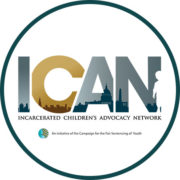Sharletta Evans
Casson Xavier Evans was Sharletta Evans’ youngest son. On December 21, 1995, Casson, who was just 3, was caught in the crossfire of a drive-by shooting. He died in her arms.
Three teenagers were charged in the crime, and two were tried as adults. Sharletta attended each day of the trials. In shock, overcome by grief, and confused as to how children so young could get access to guns and commit such a crime, Sharletta allowed her family to speak for her at the trial and during sentencing. She did not question the District Attorney’s plan to use the boys “as an example.” One of the boys was sentenced to life in prison without the possibility of parole.
Eleven years after Casson’s murder and after she had received several letters from two of the youth involved in Casson’s death, Sharletta began to correspond with them.
Sharletta knew that, in particular, the boy charged with firing the gun that killed Casson had changed. At the time of his arrest, he read at less than a third-grade level. Both of his parents had abandoned him, forcing him to raise himself with the help of grandparents. Since the crime, however, he has earned a GED, kept a clean record in prison, and committed to his faith. Most importantly, he has expressed his remorse in his letters to Sharletta many times over the years since the shooting.
Over the years, Sharletta’s perspective changed, and she emerged as a leader in Colorado and nationally for banning life without parole sentences for children.
Normally, Colorado law prohibits convicted felons from meeting with their victims or the victim’s family members. However, as a result of Sharletta’s advocacy, the Colorado Department of Corrections began a pilot program allowing these meetings to take place. Sharletta and her surviving son, Calvin, were the first victim’s family to be accepted into the program.
On May 23, 2012 Sharletta and Calvin met with the person involved in Casson’s death face-to-face for the first time. They remain in close contact, corresponding by letter and speaking by phone three times a week



